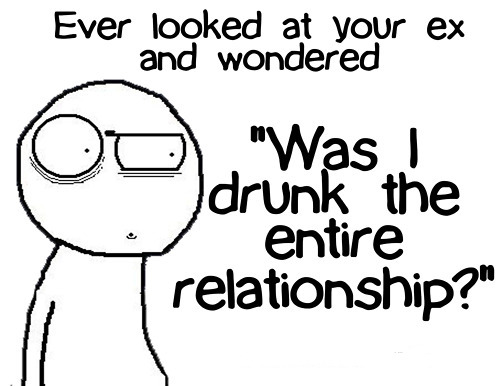No one’s perfect, until you fall in love with them.
If you’ve ever had a friend who had a girlfriend or boyfriend that you just knew wasn’t right for them, you know how hard it is to actually tell them that. They don’t listen to you. They couldn’t see the truth if it knee-kicked them in supraorbital foramen. So you’ve learned to keep your mouth closed until the day they break up and then you can say, she was a bitch anyways.
Why does this happen? Why is it when you’re in a relationship you can’t see straight? And why is that when relationships end, you actually really really really don’t like the person anymore? And then you ask yourself, why did I even like that person in the first place?
One of the most famous research papers on this topic (Seeing Virtues in Faults: Negativity and the Transformation of Interpersonal Narratives in Close Relationships) says that’s because we have distorted realities. They’re not as great as you first think they are nor as bad as you later think.
Murray and Holmes (1993) found that people are essentially able to create their own versions or stories about their partners to reduce insecurity and increase positive beliefs:
“We propose that individuals protect these convictions by weaving cogent stories that depict potential faults or imperfections in their partners in the best possible light.”
Anatomy of a Relationship
Stage 1 – Can’t get enough
In early-stage romantic relationships, partners generally experience strong positive feelings because they focus almost completely on positive qualities (Holmes & Boon 1990). Here couples perceive each other as ideal. This is why it feels the beginning of relationships feel so good.

Isn’t this the best part of breaking up, finding someone you can’t get enough of?
Stage 2 – Sure we fight sometimes
Later on as partners become more interdependent on each other, they start dealing with each other in more and different domains. When this happens, there are greater opportunities for conflicts to arise. At first these conflicts are attributed to the situation.

This perception distortion happens when individuals restructure their stories in a way that downplay negative qualities. This process helps allow individuals to commit to their partners without fear and supports trust and feelings of love (Brehm 1988).
Some psychologists even say faults in the partners actually motivates them to do even more positive story-telling.
Stage 3 – That fasshole
If the relationship continues to develop where the faults are masked by positive story-telling and the troublesome issues are not dealt with, this can lead to catastrophe and a separation. The partners positive convictions may falter if negativity is frequent and exceeds their ability to change it into positive interpretations.
Once doubt begins to erode positive convictions, the same events previously supported by positive stories can be interpreted negatively. The same distortion that previous helped make the person seem amazing can now quickly make the person seem flawed.










